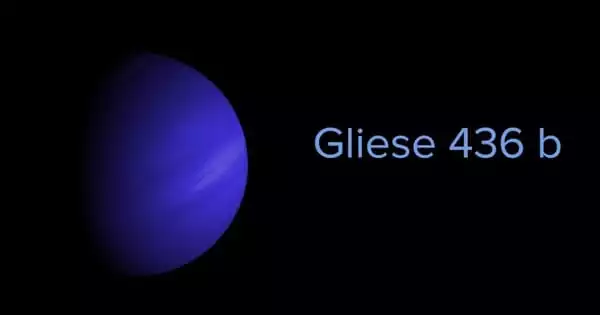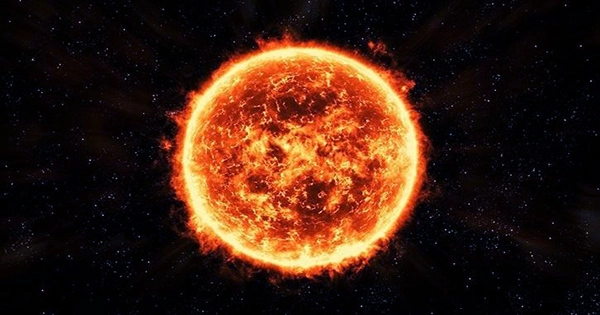Gliese 436 b is an exoplanet the size of Neptune that orbits the red dwarf Gliese 436. In just over two days, the planet completes one full orbit around its parent star. This short orbital period indicates that the planet is remarkably close to its star, possibly orbiting Gliese 436 from one-thirteenth the distance between Mercury (our solar system’s innermost planet) and the Sun.
It was the first hot Neptune discovered with certainty (in 2007), and it was one of the smallest known transiting planets in terms of mass and radius until the much smaller Kepler exoplanet discoveries began around 2010. NASA reported in December 2013 that clouds had been detected in the atmosphere of GJ 436 b.
Discovery
R. Paul Butler and Geoffrey Marcy of the Carnegie Institute of Washington and the University of California, Berkeley, respectively, discovered Gliese 436 b in August 2004 using the radial velocity method. It was the first of a new class of planets with a minimum mass (M sini) different from Neptune, along with 55 Cancri e.
Gliese 436 b is one of the closest known exoplanets to the Earth, orbiting at a distance of about 30 light-years. This exoplanet is roughly the size of Neptune and is located only 2.5 million miles from its star, Gliese 436. Mercury is 35 million miles from the sun, for comparison. Much of Gliese 436 b’s composition is unknown, but scientists have discovered an Earth-like core surrounded by large amounts of water, with a mostly hydrogen atmosphere.
An automatic process at NMSU detected the planet transiting its star on January 11, 2005, but this event went unnoticed at the time. Michael Gillon of Geneva University in Switzerland led a team that observed the transit, which grazed the stellar disc relative to Earth, in 2007. Transit observations revealed its exact mass and radius, which are very similar to those of Neptune, making Gliese 436 b the smallest known transiting extrasolar planet at the time.

Physical characteristics
The surface temperature of the planet is estimated to be 712 K (439 °C; 822 °F) based on measurements taken as it passes behind the star. This temperature is much higher than what would be expected if the planet were only heated by radiation from its star, which was previously estimated at 520 K. Whatever energy tidal effects deliver to the planet, it has little effect on its temperature. A greenhouse effect would cause temperatures to rise much higher than the predicted 520–620 K.
In just over two days, the planet completes one full orbit around its parent star. This short orbital period indicates that the planet is remarkably close to its star, possibly orbiting Gliese 436 from one-thirteenth the distance between Mercury (our solar system’s innermost planet) and the Sun.
Orbital characteristics
A single orbit around the star takes about two days and 15.5 hours. Gliese 436 b’s orbit is most likely misaligned with the rotation of its star. The eccentricity of Gliese 436 b’s orbit contradicts planetary system, evolution models. To have retained its eccentricity over time, it must have been accompanied by another planet.
A study published in Nature discovered that the orbit of Gliese 436 b is nearly perpendicular to the stellar equator of Gliese 436, implying that the eccentricity and misalignment of the orbit could have resulted from interactions with an undiscovered companion. The inward migration caused by this interaction could have triggered the atmospheric escape that sustains its massive exosphere.
The planet is too small to be made mostly of hydrogen gas, like Jupiter, but it may be too small to be a rocky super-Earth. Researchers believe it’s mostly made of an unusual type of water, a “ice” hardened by pressure rather than temperature.
















